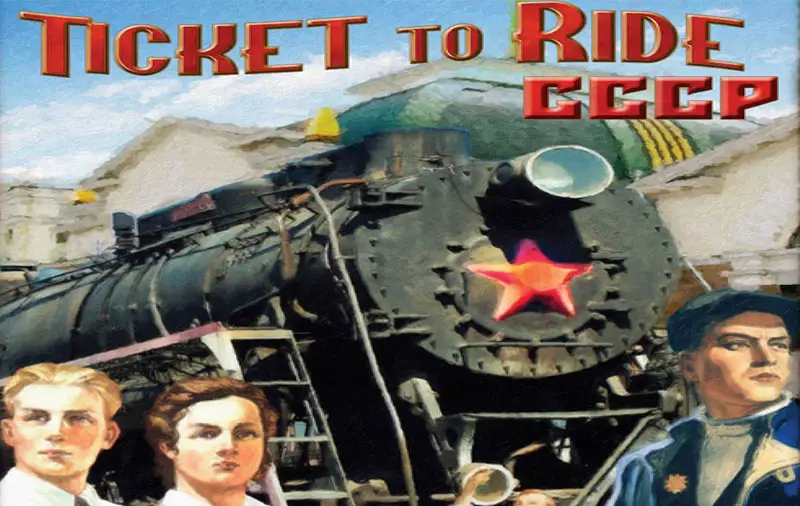
This a fan-based expansion for use with any of the excellent Ticket to Ride games published by Days of Wonder. Since it uses Train Stations, it is best used with Ticket to Ride Europe. Design, development and component construction by Nikita Semago. The rules are written by Roger Burrows.
Components
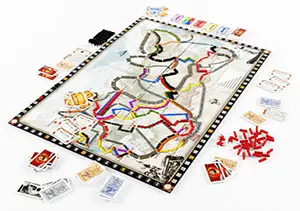
- 1 Board map of USSR train routes
- 240 Colored Train Cars
- 15 Colored Train Stations
- 10 Train Car cards
- 2 Controller cards
- 57 Destination tickets
- 1 "Viva to the Soviet Railroad" bonus card
- 1 "The Longest Railway in the Soviet Union" bonus card
- 1 "Viva to the Soviet Tunnel Builders" bonus card
- 1 "Viva to the Soviet Sailors" bonus card
- 5 Wooden Scoring Markers
- Rulebook
Setup
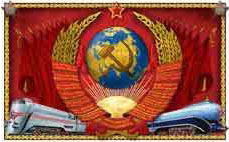
Place the board in the center of the table. Each player receives a set of 45 Colored Train Cars, a matching set of three Colored Train Stations and the corresponding Scoring Marker.
Each player places their Scoring marker on 'Start' (0) on the Scoring Track running along the map's border. Throughout the game, each time a player scores points, they will advance their marker accordingly.
Shuffle the Train cards and deal a starting hand of four cards to each player.
Place the remaining deck of Train cards near the board, then turn the top five cards from the deck face up, and lay them one next to the other.
Place the 4 Bonus (Across All Of Russia, Hero of the Railroad, Hero of the Sailors, Hero of the Miners) cards, face up, next to the board, as a reminder to the players.
Take the deck of Destination Tickets and separate the long routes (the twelve Destination Tickets with a blue background) from the regular routes (the 45 Destination Tickets with a brown background). Shuffle the long routes, and randomly deal two to each player.
Put any remaining long routes back in the game box without letting anyone see them. Now shuffle the short-route Destination Tickets, deal two to each player, and place the remainder in a draw pile face down, next to the board.
Before taking their first turn, players must choose which Destination Tickets they will keep from among those they were initially dealt. Each player must keep a minimum of two tickets (one long-route and one short-route) although they may keep more.
Put any Destination Tickets you wish to discard back in the game box without letting any of the other players see them. The Tickets that are put away may either be long routes or short routes or both. The tickets you decide to keep are held until the end of the game.
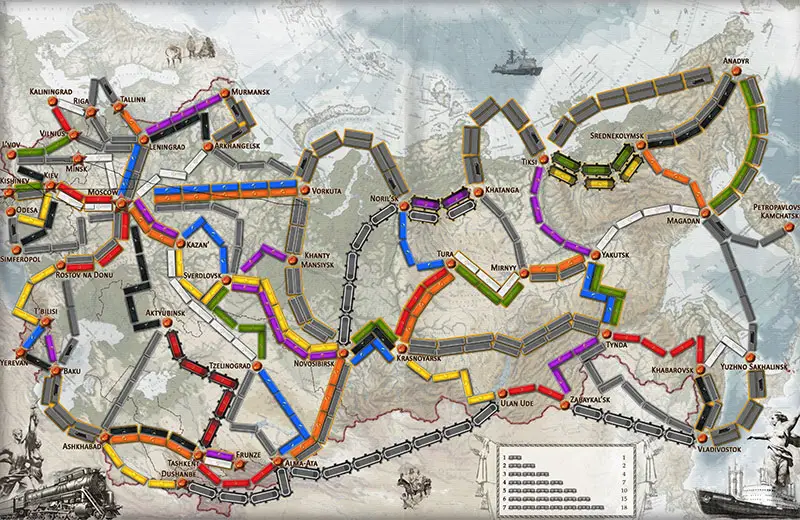
Object of the Game
The object of the game is to score the highest total number of points. Points can be scored by:
Claiming a Route between two adjacent cities on the map.
Successfully completing a continuous path of routes between two cities listed on your Destination Ticket(s).
Completing the Longest Continuous Path of routes to win the 'Across All Of Russia' Bonus card.
Completing the Highest Number of completed destintion tickets to win the 'Hero of the Railroad' Bonus card.
Completing the Highest Number of Ferries spaces to win the 'Hero of the Sailors' Bonus card.
Completing the Highest Number of Tunnel spaces to win the 'Hero of the Miners' Bonus card.
And for each Train Station kept in reserve at the end of the game. Points are deducted from the players' total score for each of their Destination Tickets that are not successfully completed by the end of the game.
Game Play
The player who has visited the most Russian cities in their or her lifetime begins the game, and play then proceeds clockwise. On their turn, a player must perform one (and only one) of the following actions:
-
Draw Train Car Cards
The player may draw two Train cards (or just one, if the card they select is a face-up Locomotive. See Locomotives for special rules);
-
Claim a Route
The player claims a route on the board by playing a set of Train cards from their hand that match the color and quantity of the spaces that make up the route. They placec one of their colored trains on each space, and scores the number of points indicated on the Route Scoring Table for that route's length;
-
Draw Destination Tickets
The player draws three Destination Tickets from the top of the Tickets deck, and must keep at least one of them;
-
Build a Train Station
The player may build a Station in any city that does not yet have one.
To build their first Train Station, the player plays one Train card of any color that matches the color of a route that leads to that city, or one of any color if there is at least 1 gray route leading to that city, and places one of their Train Stations on that city.
To build their second station, a player must play a set of two cards of the same color according to the rules for playing a station, and similarly to build their third station a set of three cards of the same color. Locomotives may also be used.
-
Play the Conductor Card
The player may play a Conductor card from their hand, and then take one of two actions: the player can claim any route of length 4 or less that is currently unclaimed. Ferry routes and tunnels routes can also be claimed using the Conductor Card.
If a tunnel route is claimed, no additional cards are required; or the player may delete the route of length 4 or less of another player, returning the deleted train cars to that player.
Drawing Train Cards
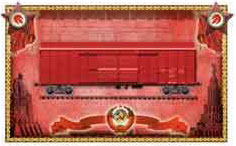
There are eight types of regular Train cards, in quantities of 12 each, and 14 Locomotive cards. The colors of each type of Train card match the colors of various routes between cities on the board - Purple, Blue, Orange, White, Green, Yellow, Black, and Red.
If a player chooses to draw Train cards, they may draw two cards per turn. Either of these cards can be drawn from the five face-up cards next to the board or from the top of the deck (blind draw).
If drawing a face-up card, the player must immediately replace it with a new card taken from the top of the draw pile. If a player selects a face-up Locomotive card, it is the only card they may pick this turn (see Locomotives).
If, at any time, three of the five face-up Train cards are Locomotives, all five cards are immediately discarded, and five new cards turned face-up to replace them.
A player may have any number of cards in their hand at any time. When the draw pile is exhausted, the discards are reshuffled into a new draw pile deck. The cards must be shuffled thoroughly, since they will usually have been discarded in sets.
In the unlikely event there are no cards left in the deck, and no discards available to shuffle as a result of players hoarding cards in their hands, a player will not be able to draw Train cards. They must then Claim a Route, Draw Destination Tickets, Build a Station or Play a Conductor Card.
Locomotives
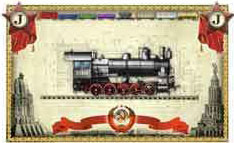
Locomotives are multi-colored, and act as wild cards in the game. Locomotive cards can be played along with any set of cards when claiming a route. They are also vital to claiming Ferry routes (see Ferries).
If a face-up Locomotive card is picked during a card draw, it must be the only card picked that turn. If a Locomotive is turned over as a replacement for a first card drawn during the turn, or if a Locomotive is available face-up but not picked up as the first (and only) card, it cannot be selected as a second card.
However, if a player is lucky enough to get a Locomotive from the top of the deck in a blind draw, it still counts as a single card and the player may still draw a total of two cards that turn.
Claiming Routes
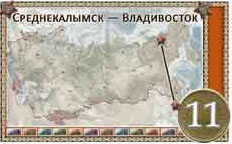
A route is a set of continuous colored spaces (in some instances, gray spaces) between two adjacent cities on the map.
To claim a route, a player must play a set of Train cards whose color and quantity match the color and number of spaces of the chosen route. Most routes require a specific set of colored cards to claim them. Locomotives can always act as a stand-in for any given color.
Routes that are Gray can be claimed using a set of cards of any one color. When a route is claimed, the player places one of their plastic trains on each of the spaces of the route.
All the cards from the set used to claim the route are then discarded. The player then immediately records their score by moving their Scoring Marker the appropriate number of spaces along the Scoring Track, per the Route Scoring Table.
A player may claim any open route on the board. The player is never required to connect to any of their previously played routes.
A route must be claimed in its entirety during a single turn. For example, you cannot lay two trains on a three-space route and wait for the next turn to lay the third train. No more than one route may be claimed in a given player's turn.
Double Routes
Some cities are connected by Double-Routes. These are routes whose spaces are parallel and equal in number from one city to the other. One player can never claim both routes between the same cities during the course of the game.
Be aware of routes that are partially parallel to each other but are linked to different cities. These are not double-routes.
Important Note: In two or three player games, only one of the Double-Routes can be used. A player can claim either of the two routes between cities, but the other route is then closed to the other players for the remainder of the game.
Ferries
Ferries are special Gray routes linking two adjacent cities across a body of water. They are easily identified by the Locomotive icon(s) featured on at least one of the spaces making the route.
To claim a Ferry Route, a player must play a Locomotive card for each Locomotive symbol on the route, and the usual set of cards of the proper color for the remaining spaces of that Ferry Route.
Tunnels
Tunnels are special routes that are easily identified by the special tunnel marks and outlines surrounding each of their spaces.
What makes a tunnel special is that a player is never quite certain just how long the route they are trying to claim will be! When attempting to claim a Tunnel route, a player first lays down the number of cards required by the length of the route.
Then the three top cards from the Train draw pile are turned face-up. For each card revealed whose color matches the color of the cards played to claim the Tunnel, an additional card of the same color (or a Locomotive) must now be played from their hand. Only then can the player successfully claim the Tunnel route.
If the player does not have enough additional Train cards of the matching color (or does not wish to play them), they may take all their cards back in their hand, and their turn ends. At the end of the turn, the three Train cards revealed for the Tunnel are discarded.
Remember that Locomotives are multi-colored wild cards. As such, any Locomotive card drawn from the top of the Train draw pile during an attempt to go through a tunnel will automatically match the color of the train cards played on the route, and force the player to play an additional card.
If a player attempts to go through a Tunnel using Locomotive cards exclusively, the player will only have to play additional cards (which must be additional Locomotives in this case) if Locomotives show up among the three cards drawn for the Tunnel.
In the rare event there is not enough cards available in the draw and discard piles to reveal 3 cards and determine the effect of the tunnel on a player, then only those cards that are available are revealed. If, as a result of players hoarding cards, there are none to be revealed, a tunnel can be claimed without risking additional cards.
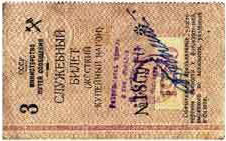
Drawing Destination Tickets
A player can use their turn to draw additional Destination Ticket cards. To do so, the player draws three new cards from the top of the Destination Ticket Deck. If there are less than three Destination Tickets left in the deck, the player only draws the cards that are available.
A player drawing Tickets must keep at least one of them, but may choose to keep two, or all three. Any drawn Ticket not kept in hand is placed at the bottom of the Destination Ticket Deck. Tickets drawn and not immediately discarded must be kept until the end of the game. They cannot be discarded during a later Ticket draw.
The cities listed on a Destination Ticket represent travel goals for the player; they can result in a bonus or a penalty. If, by the end of the game, a player has created a continuous path of their color plastic trains between the two cities named on a Destination Ticket the player holds, they score the additional points indicated by the Point Value on the Ticket. If they have failed to complete a continuous path between those cities, they deducts the Point Value on the Ticket from their total score.
Destination Tickets are kept secret from other players until the game's final scoring. A player may have any number of Destination Tickets during the game.
Building a Train Station
A Train Station allows its owner to use one, and only one, of the routes belonging to another player, into (or out of) that city to help him connect the cities on their Destination Tickets. Stations may be built on any unoccupied city, even if it currently has no claimed routes into it. Two players may never build a Station in the same city.
Each player may build a maximum of one Station per turn, and three Stations throughout the course of the game.
To build their first Station, a player plays and discards one Train card from their hand, and places one of their colored Train Stations on the chosen city.
To build a second Station, the player must play and discard a set of two cards of any one color; and to build their third, a set of three Train cards of any one color. The color of the train cards to be played must match the color of one of the routes leading into that city. If at least one gray route leads to the city, any color may be used. As usual, you can replace any number of cards by Locomotives.
If a player uses the same Station to help connect cities on several different Tickets, they must use the same route into the city with the Station for all of those Tickets. The Train Station owner does not need to decide which route the player will use until the end of the game.
A player is never required to build any Stations. For each Station a player has not used, four points are added to their score at the end of the game.
End of the Game
When any one player's stock of colored plastic trains gets down to two trains or less at the end of their turn, each player, including that player, gets one final turn. The game then ends and players calculate their final scores.
Scoring
Players should have already accounted for the points they earned as they completed various routes. To make sure no mistakes were made, you may want to recount the points for each player's routes.
Players must then reveal all of their Destination Tickets. The value of successfully completed tickets is added to their total score. The value for any incomplete Tickets is deducted from their total score.
Remember that each Station played allows its owner to use one (and only one) route belonging to another player into that City for the purpose of completing a Destination Ticket.
If a player uses the same Station to help connect cities on the paths of several different Destination Tickets, they must use the same route into or out of the city with the Station for all Tickets.
Add to the score of each player four points for each unplayed Station they still have in reserve.
-
Give the 10 point bonus for the 'Across All Of Russia' bonus card to the player(s) who have the Longest Continuous Path on the board. When evaluating and comparing path lengths, only take into account continuous lines of plastic trains of the same color.
A continuous path may include loops, and pass through the same city several times, but a given plastic train may never be used twice in the same continuous path.
-
Stations, and the opponents' routes they may provide access to, do not count for the purpose of computing paths and claiming the longest one. If several players are tied for the longest path, they each receive the 10 points bonus from the 'Across All Of Russia' card.
-
Give the 7 point bonus for the 'Hero of the Sailors' bonus card to the player(s) who have trains on the largest number of occupied ferry spaces. If several players are tied for the largest number, they each receive the 7 point bonus from the 'Hero of the Sailors' card.
-
Give the 7 point bonus for the 'Hero of the Miners' bonus card to the player(s) who have trains on the largest number of occupied tunnel spaces. If several players are tied for the largest number, they each receive the 7 point bonus from the 'Hero of the Miners' card.
-
Finally, give the 15 point bonus for the 'Hero of the Railroad' bonus card to the player(s) who have completed the largest number of destination tickets.
For purposes of caculating who has the largest number, note that it is only the number of completed destination tickets that matters, and not the score value of those tickets. If several players are tied for the largest number, they each receive the 15 point bonus from the 'Hero of the Railroad' card.
The player with the most points wins the game.
If two or more players are tied with the most points, the player who has completed the most Destination Tickets is the winner. If still tied, the player who used the least number of Stations is declared the winner.
In the unlikely event players are still tied, the player with the 'Across All Of Russia' bonus card wins.
Continue Reading


